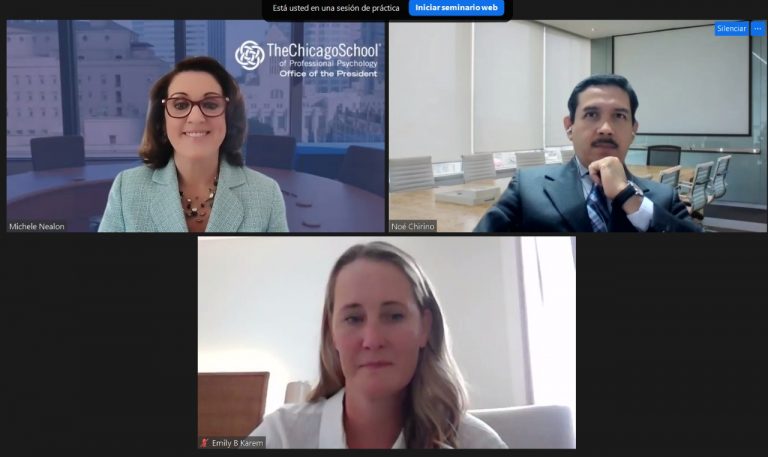
Mental Health Crisis: How institutions can make a difference
As we move forward from the effects of the pandemic, and societies across the world experience an increasing demand for mental health services, Higher Education institutions have the opportunity to create sustainable change by leading the way in developing the next generation of the mental health workforce.
“As higher education institutions we have the unique expertise to address current mental health issues”, said Dr. Michele Nealon, President of The Chicago School of Professional Psychology (TCSPP), during the second session of the IAUP-TCSPP Webinar Series, titled “Meeting the Escalating Demand for Mental Health Services: How Universities and Colleges can Shape the Workforce”, on August 3, 2022.
“Members of communities are struggling with mental health. 10% of adults reported anxiety and depression in 2019; by 2021 it was 40%”, emphasized President Nealon. Data points demonstrate not only students, but faculty, staff and parents are all part of this crisis, creating an unmet demand that in turn complicates access, especially amongst those with lower resources.
In what is a complex and multifaceted crisis, Dr. Nealon pointed out two pressing issues: a need for growth, and a need for diversification of the workforce.
In this context, Higher education has a responsibility to increase both the number of trained mental health professionals and the size of community members each provider can support, as well as provide cultural competency training and diverse experiences for students.
“We need to diversify the workforce to ensure everyone gets access to someone who understands and respects their unique experiences”, said Dr. Nealon.
One reason students don’t pursue these careers is that they can be prohibitively expensive. To make a difference, Dr. Nealon suggests institutions offer robust student aid to students pursuing these careers, ideally grants and scholarships, with financial support programs targeted to solve the most pressing issues, such as limited access in low-income communities.
Leaders must also develop systems of support and incentives to show the value of this work, while ensuring innovative, affordable, accelerated programs that do not sacrifice quality, rewarding credits and experience to fast-track students into the workforce.
Moving across different levels of education, career shadowing days to demonstrate opportunities to work in mental healthcare can be offered in primary schools, while mentorships and internships can help middle and high school students explore mental healthcare more in depth.
Furthermore, institutions and practitioners can leverage telehealth to support more communities and ensure more providers can offer expanding help.
“Our colleges and universities can make a meaningful difference in community wellness by making efforts to grow and diversify the mental health workforce”, said Dr. Nealon.
Session 1 of the Webinar Series with TCSPP, “The State of Student Mental Health”, can be viewed here.











